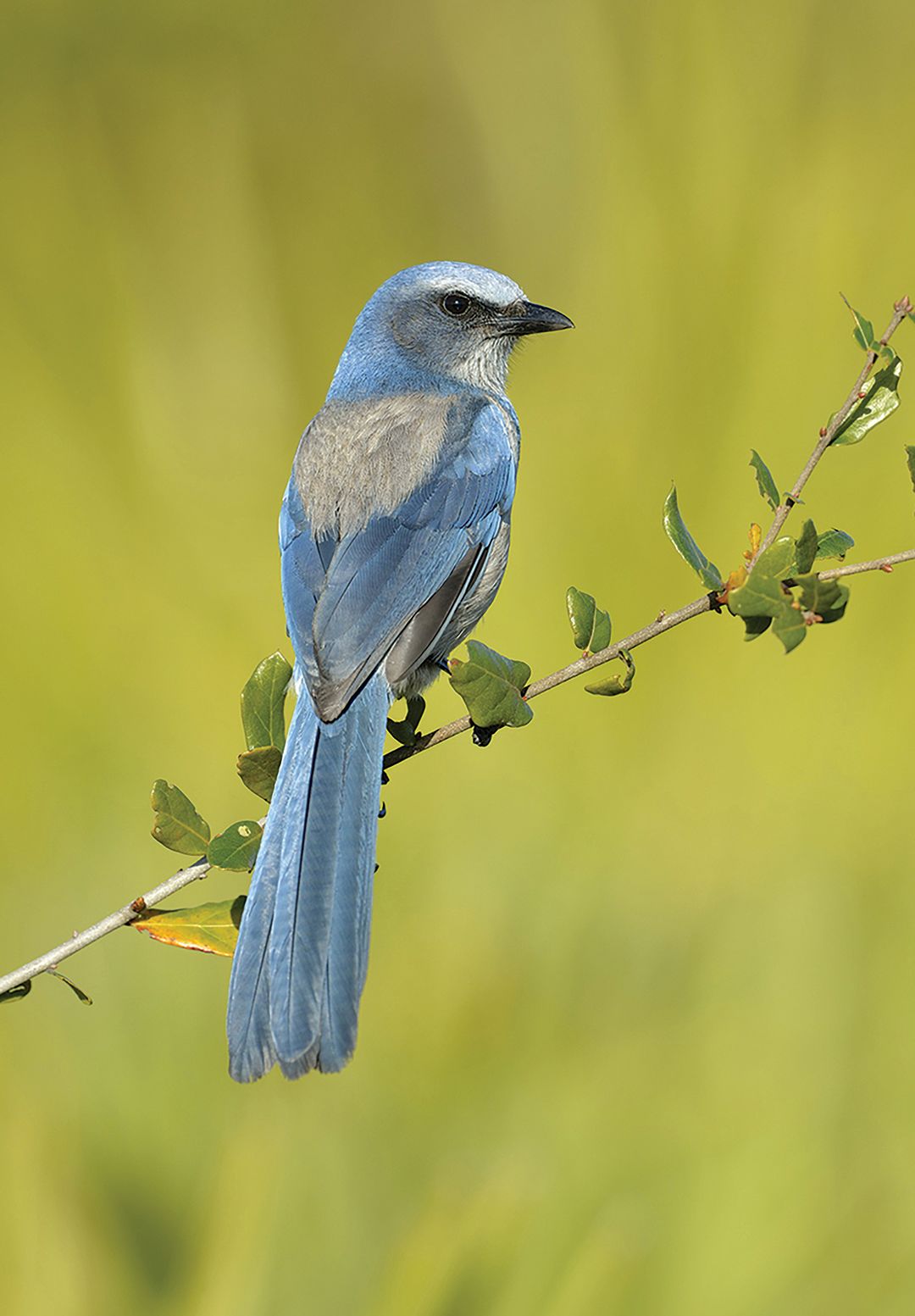Saving Florida’s Friendliest Native Bird Matters

Image: Shutterstock
For the past 2 million years, Florida has been home to a superlative bird found nowhere else on earth. These birds are remarkably smart, with extraordinary memory and perhaps even the ability to plan ahead. Highly social yet quarrelsome, they’re like the stars of an avian soap opera. And they’re as brash and curious as precocious kids. Many a jubilant birdwatcher has turned to find one mischievously perched upon their shoulder.
Despite decades of conservation efforts, the Florida scrub jay remains an animal at risk. In the two decades after the species was classified as threatened in 1975, the population dwindled by 90 percent. Since 1993, it has dropped another 25 percent. Now just about 8,000 Florida scrub jays remain in the state. At Oscar Scherer State Park, home to Sarasota County’s largest population, the numbers have dropped from 160 birds to less than 20.
Part of the problem is that scrub jays, like many Floridians, are picky about where they live, preferring undeveloped scrubby flatwoods, where small scraggly oaks and saw palmettos take root in fine white sand dunes. “Scrub jays like scrub,” says Tony Clemens, park manager at Oscar Scherer. “And they like it just right. I call it the ‘Goldilocks zone.’ Not too short, not too tall, not a lot of pines. They’re very particular. They won't live in any other type of habitat.”
But scrub habitat is high and dry, making it desirable for developers and long pitting the state’s ancient avian natives against more recent, sun-seeking arrivals.
Still, across the state, land acquisition, restoration and management programs have sought to protect the species and its habitat. Controlled burns, which use fire to naturally revitalize scrubby flatwoods, have become an essential part of the conservationist’s toolkit. Meanwhile, programs that ship the birds to new locations across the state have helped diversify the gene pool of distant populations.
There have been some successes. At Duette Preserve in Parrish, thousands of acres of scrub habitat have been acquired and improved. And at Archbold Biological Station near Lake Placid—where scrub jays are the subjects of one of the longest continuous studies of a bird population—the scrub jay’s future looks hopeful. A handful of these strongholds scattered across the state may be the species’ last hope for survival.
The species is especially threatened in isolated locales like Oscar Scherer that inhibit genetic diversity. “I’m a very optimistic person, but I don't ignore the data,” Clemens says. “It’s important for people to realize the dire needs that we have for the Florida scrub jay. I consider it the canary in the coal mine.”
Scrub jays are part of a vanishing ecosystem that also includes threatened wildlife like the gopher tortoise, Florida mouse, scrub lizard and sand skink, so conservation efforts that protect scrub jays protect these animals as well.
“If you're doing management that benefits scrub jays, you're also managing a whole bunch of other interesting and unique species in Florida,” says Craig Faulhaber, the Avian Conservation Coordinator for the Florida Fish and Wildlife Conservation Commission.
Oscar Scherer pushes for education and outreach programs to bring attention to the species. Though the park’s urban location makes it tricky for scrub jays to thrive, it gives locals a place to come into contact with these birds. Every Sunday morning Clemens hosts a guided scrub jay walk and once a month welcomes volunteers to help take a census of the park’s population.
Since 2000, the park has also hosted the Scrub-Jay 5/10K Race to raise money and awareness for the bird. The race kicks off this year on Jan. 12.



